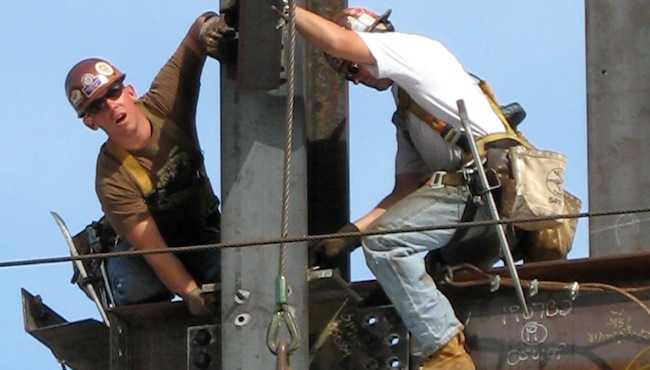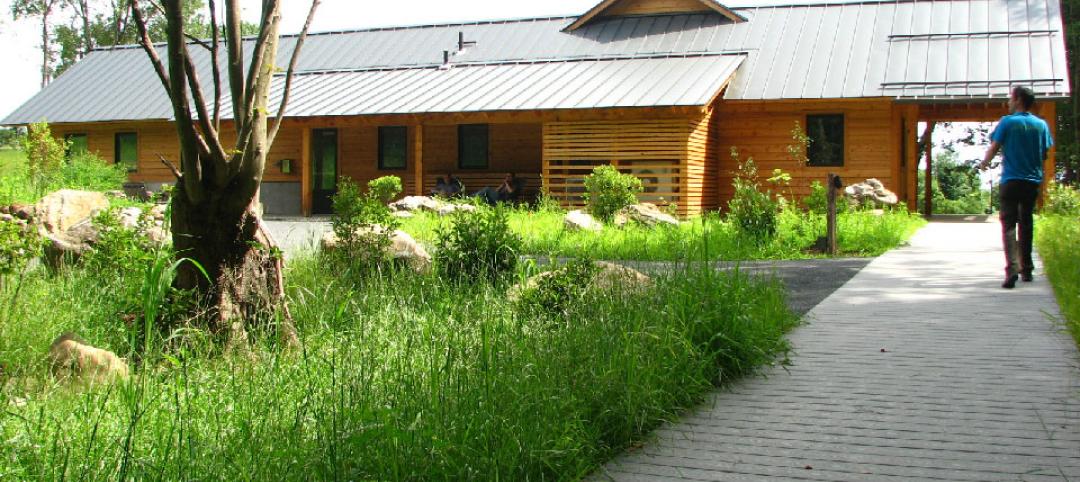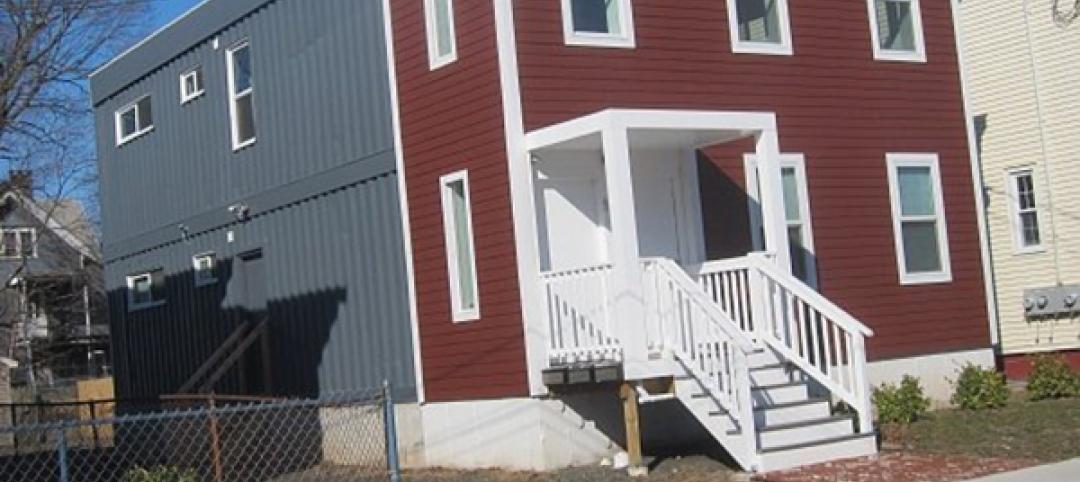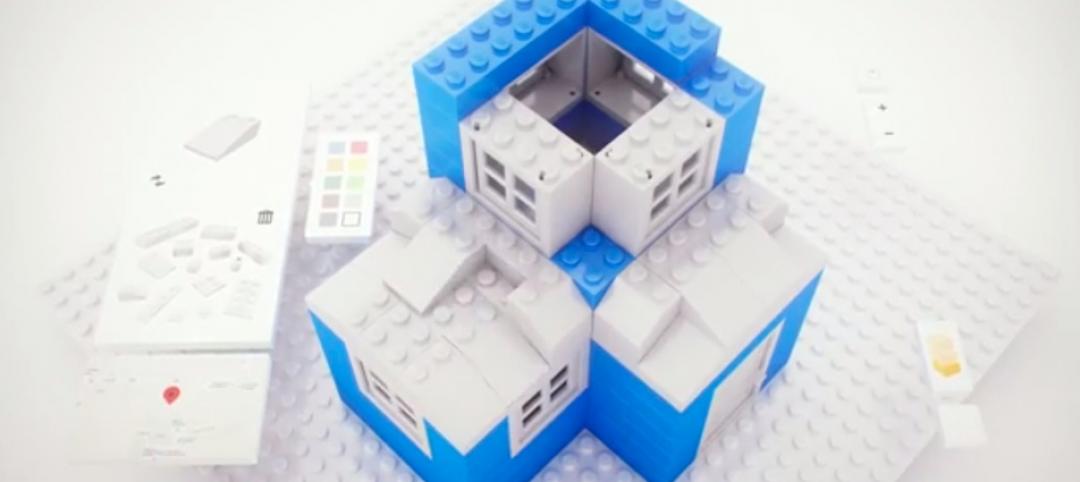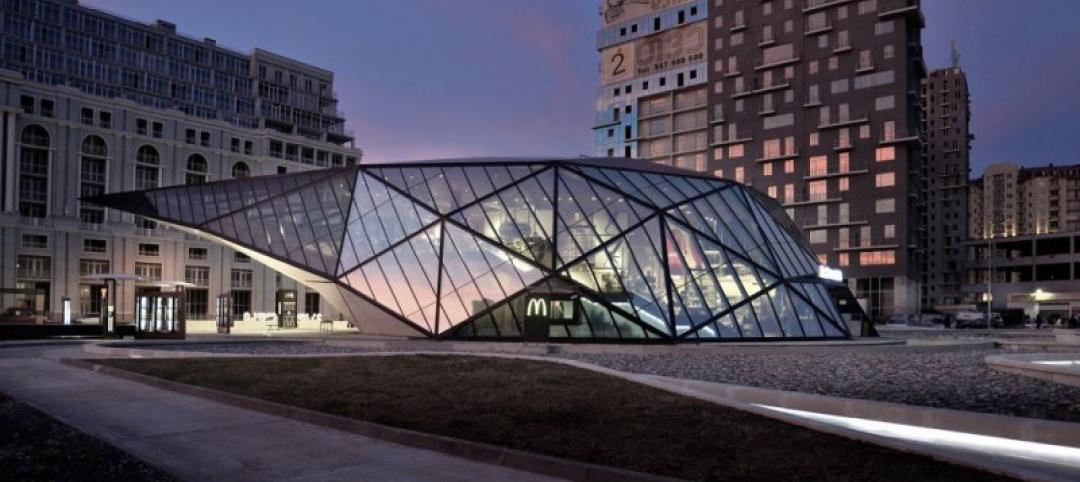Tens of thousands of employers and more than 1 million workers across the country are joining the Occupational Safety and Health Administration from June 2 - 6 in safety stand-downs to focus on saving lives and preventing fatalities from falls in the construction industry.
Falls are the leading cause of death in construction and more than 300 workers lost their lives in falls during 2012. Lack of fall protection is the most frequently cited OSHA violation, proving that these deaths are preventable when employers provide the right safety equipment and properly train workers how to use it.
As a part of the Stand-Down, companies and workers will voluntarily stop work to host safety events focusing on how to prevent these fatalities.
The purpose of the National Fall Prevention Stand-Down is to raise awareness of preventing fall hazards in construction. Fatalities caused by falls from elevation continue to be a leading cause of death for construction workers, accounting for 269 of the 775 construction fatalities recorded in 2012. Those deaths were preventable. Fall prevention safety standards were among the top 10 most frequently cited OSHA standards, during fiscal year 2012.
What is a Safety Stand-Down?
A Safety Stand-Down is a voluntary event for employers to talk directly to employees about safety, this year we are focusing on “Fall Hazards" and to reinforce the importance of "Fall Prevention."
How to Conduct a Safety Stand-Down and FAQ's
Companies can conduct a Safety Stand-Down by taking a break to have a toolbox talk or another safety activity such as conducting safety equipment inspections, developing rescue plans, or discussing job specific hazards. Managers are encouraged to plan a stand-down that works best for their workplace anytime during the week of June 2-6, 2014. See Suggestions to Prepare for a Successful "Stand-Down."
The goal is to have over 25,000 employers and 500,000 workers to hold a Stand-Down and if we meet this goal, we will have touched almost 1 out of 10 construction workers in the country.
Who Can Participate?
Participants may include employer’s trade associations, federal, state and local governmental agencies, professional societies, institutes, and consumer/labor-management interest organizations, sub-and independent contractors.
Partners
OSHA is partnering with key groups to assist with this effort, including the National Institute for Occupational Safety and Health (NIOSH), OSHA approved State Plans, State consultation programs, the Center for Construction Research and Training (CPWR), the American Society of Safety Engineers (ASSE), the National Safety Council, and the OSHA Training Institute (OTI) Education Centers.
Certificate of Participation
Employers can provide feedback about their Stand-Down and receive a Certificate of Participation signed by the Secretary of Labor, Thomas E. Perez. The page will remain active through July 15, 2014.
Share Your Story With Us
If you want to share information with OSHA on your Safety Stand-Down, Fall Prevention Programs or suggestions on how we can improve future initiatives like this, please send your email to oshastanddown@dol.gov.
Related Stories
| Feb 5, 2014
Multifamily Housing, Green Building, Market Trends, Innovation to be Prime Topics at MBI’s World of Modular
More than 600 developers, contractors, architects, builders, dealers and equipment/service suppliers are expected at the event, slated for March 21-24 in San Antonio, Texas, and hosted by the Modular Building Institute.
| Feb 5, 2014
Hill International's Board of Directors Approves Leadership Succession Plan
Hill International the global leader in managing construction risk, announced today that the company's Board of Directors has approved a leadership succession plan that will allow for the transition of the Chief Executive Officer position at the end of this year. Effective December 31, 2014, Irvin E. Richter, Hill's Chairman and CEO, will relinquish the CEO title but will remain with the company as Chairman. At the same time, David L. Richter, currently Hill's President and Chief Operating Officer, will become President and CEO.
| Feb 5, 2014
7 towers that define the 'skinny skyscraper' boom [slideshow]
Recent advancements in structural design, combined with the loosening of density and zoning requirements, has opened the door for the so-called "superslim skyscraper."
| Feb 4, 2014
World's fifth 'living building' certified at Smith College [slideshow]
The Bechtel Environmental Classroom utilizes solar power, composting toilets, and an energy recovery system, among other sustainable strategies, to meet the rigorous performance requirements of the Living Building Challenge.
| Feb 4, 2014
Must see: Student housing complex made with recycled shipping containers
Architect Christian Salvati's new structure is just the first step in bringing shipping container construction to New Haven, Conn.
| Jan 31, 2014
LEGO, Google partner to develop 3D modeling tool for LEGO structures
The free tool, called Build, allows Chrome users to create virtual 3D structures using any shape and color in the LEGO catalog.
| Jan 31, 2014
Ultra-modern McDonald's restaurant voted one of world's best new buildings
This McDonald's, which is combined with a fuel station and recreation areas, was awarded the Best Commercial Building of the Year by architecture website ArchDaily.
| Jan 31, 2014
6 considerations for rehabbing student union buildings
Most colleges and universities feel pressure to offer the latest amenities in order to attract and retain the best and brightest students. While hauling in the bulldozer to create modern facilities is attractive in some regards, deciding to renovate can be just as effective and, in some cases, even preferable to new construction.
| Jan 30, 2014
Mayors of 10 metros unite to cut building-related climate pollution
Organizers say combined initiative could cut as much climate-change pollution as generated by 1 million cars every year, and lower energy bills by nearly $1 billion annually.
| Jan 30, 2014
See how architects at NBBJ are using computational design to calculate the best views on projects [video]
In an ideal world, every office employee would have a beautiful view from his or her desk. While no one can make that happen in real life, computational design can help architects maximize views from every angle.


